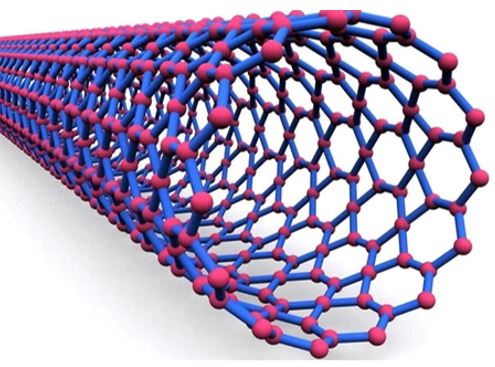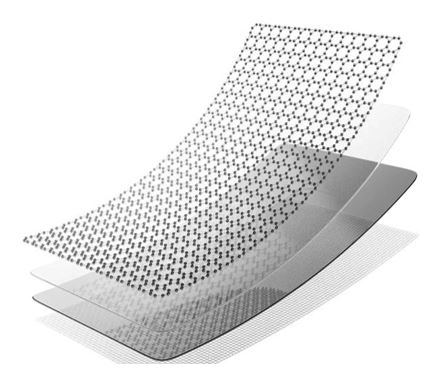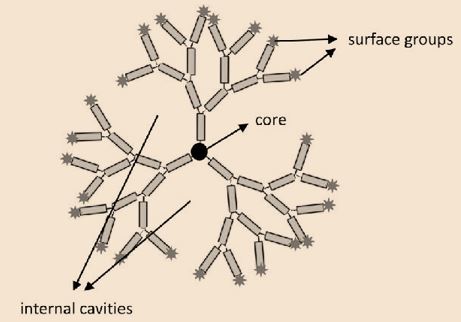What is Nanotechnology?
Nanotechnology, simply Nanotech, is the engineering of small machines that use matter of atomic, molecular and supramolecular scales for industrial purposes. It is the process of manipulating atoms and molecules to manufacture macroscale products or molecular nanotechnology. The development of nanotech and its branches would be the result of a manufacturing revolution, which making impossible thing, the possible. Nano means the structures with a size of 1–100 nanometers in at least one dimension, and involves modifying or developing materials within that size. So, the technology that developed with such structures called as Nanotechnology and devices are called as Nano Devices or Components. It has many applications including electronics, biology, chemical engineering, robotics electronics, etc.
Going in depth, a human hair size is approximately 25,000 nanometers wide, so we can imagine how small these Nano machines or Nano devices. It is sometimes called general-purpose technology This is because in its advanced form, it would have a significant impact on almost all industries and all sectors of society. This makes the material lighter, stronger, faster, smaller and more durable. This will help in creating better manufactured, long-lasting, hygienic, safe and smart products for the home; communication, medicine, transportation, agriculture, and industry in general.
Table of Contents
History of Nanotechnology:
In 1959 a physicist R. Feynman envisioned this theoretical potential. According to the National Science Foundation, nanotech is the ability to understand, manipulate and control matter at the level of individual atoms and molecules. There is a longitudinal process of convergence and divergence across the broad fields of engineering and science. For example, the convergence of science on a large scale was achieved during the Renaissance, and was later followed by Narrow Disciplinary Specialization (NDS) in science and engineering in the 18th–19th centuries. Convergence on the nanoscale almost reached its peak in the year 2000, and divergence in Nano system architecture is predicted for the next decades.
Branches of Nanotechnology
It is already mentioned that Nanotech applications are vast; it happens only because of its feasibility of usage. So, the branches of nanotechnology will explain that feasibility. There are many Nanotech products available and much research is still being done in research laboratories and universities. Few applications of these devices are
- Mineral
- Non-Fuel
- Agricultural commodities
- And many more.
Currently, Nanotech is recognized as a revolutionary discipline in terms of its impact on industrial applications. Additionally, it offers potential solutions to various problems using Nano-emission techniques too. Based on the strong inter-panel character of nanotechnology, there are various areas of research and various potential applications associated. According to that, some of the branches where nanotechnology has been applied are
- Nano Engineering
- Green Nanotechnology
- Wet Nanotechnology
1. Nano Engineering
It is the branch of nanotechnology practice at the nanoscale and the name “Nano Engineering” is derived from the nanometer, a unit of measurement equal to one billionth of a meter. This branch emphasizes engineering rather than the applied science aspect of the field. Scanning tunneling microscopy (simply STM) and molecular self-assembly are two Nano Engineering Techniques. STM is used to employ structures as small as a single atom, whereas with molecular self-assembly, an arbitrary sequence of DNA can be synthesized and used to create custom proteins or regular patterns of amino acids.
2. Green Nanotechnology
This is one of the branches of Nanotechnology that seeks to improve the environmental sustainability of processes causing negative side effects. This involves manufacturing Green Nano Products and then using these Nano Products to support sustainability. Green Nanotechnology aims to reduce future risks to the environment and human health associated with the use of Nanotech products, and encourages the replacement of existing products with Nano Products that are environmentally friendly. Few applications are
- Solar Cells
- Nano Treatment and
- Water Treatment
3. Wet Nanotechnology
Wet nanotechnology refers to working on a large scale, starting with the smaller ones. W. Eric Drexler put forward the idea of Nano assemblers being dry. Wet nanotechnology is the first area where a Nano-Assembler achieves commercial results. The main features of this branch are
- Pharmaceuticals and
- Bio-Science
R.A.L. Jones inserts fragments of natural nanotech into the Bio-Clastic Nanotechnology of synthetic structures. Using the guiding principles of biomimetic nanotechnology, trillions of nanotech robots have been designed that resemble bacteria in their structural properties and enter a person’s bloodstream to perform medical treatments such as Cancer.
Also Read:
- Electric Bicycle – Types and Their Working -FAQ’s
- 3D Printing Machine – Types, Working, Advantages, and Applications
Applications of Nanotechnology
Over the past two decades, Scientists and Engineers have mastered the complexities of working with the non-material; as a result, we can observe that most products today are made from Nanoscale Materials.
- Sunscreen containing nanoscale zinc oxide or titanium dioxide that reflects ultraviolet light to prevent sunburn.
- A nanoscale dry powder can neutralize the Gas. Therefore, nanoscale materials are being used to make batteries for devices that deliver more power, more quickly and dissipate less heat.
- Other uses of nanotechnology include sports equipment, vehicle parts, battery energy storage, moisturizing efficacy of cosmetics, drug delivery, and many other technologies and products based on nanoscale materials as described in Bruce.
Few other application of Nanotechnology are
- Carbon Nanotubes (CNTs)
- Nano Thin Film
- Nano Scale Transistor
- Dendrimer Drug Delivery Techniques
- Water Filtration Techniques
1. Carbon Nanotubes (CNTs)

Carbon nanotubes are cylindrical nanostructure of carbon. Nanotubes are manufactured with a length-to-diameter ratio of up to 2,80,00,000:1, which is significantly higher than that of any other material. These cylindrical carbon molecules have exceptional strength and unique electrical properties. These innovative properties make them quite useful in various applications in the fields of
- Electronics
- Nanotechnology
- Optics
- Materials Science and
- Architecture
However, its ultimate use may be limited by its potential toxicity. The nanotube is shown in Figure 2.
2. Nano Thin Film

Various Nanoscale materials can be used in thin films to make them water-repellent, UV or IR resistant, anti-reflective, antimicrobial, self-cleaning, anti-fog, scratch resistant, or electrically conductive. The Applications of Nano Film include
- Computer Screens
- Cameras and
- Glasses
The Nano Film is shown in Figure
3. Nanoscale Transistor
Transistor is a semiconductor electronic device used to amplify or switch electronic signals and electrical energy. In transistors, a small amount of energy is used as a gate to control the flow of a large amount of electricity. The more transistors installed in the computer, the more power will be generated. The size of transistor is decreasing day by day, so computer has become more powerful. By far, the best trading technology in the industry produced computer chips with 45-nanometer specialty transistors. Recent announcements indicate that even smaller sizes of transistors are possible with the help of nanotechnology.
4. Dendrimer Drug Delivery Techniques

Dendrimers are highly branched, star-shaped macromolecules with nanometer-scale dimensions as shown in Fig. Dendrimers are specifically designed and manufactured for a wide variety of applications that includes
- Cancer Treatment
- Drug Delivery
- Catalysis
- Gene Transfer
- Energy Harvesting And
- Photo-Activity
Dendrimers carrying different materials and their branches can perform many functions simultaneously, such as sensing diseased cells, diagnosing disease conditions (including cell death), delivering drugs, describing the location and reporting medical events to report.
5. Water filtration techniques
Carbon nanotube-based membranes are used for water desalination and nanoscale sensors to diagnose contaminants in water systems. Nanoscale titanium dioxide is another nanoscale material that has great potential for filtering and purifying the water system and is also used to neutralize bacteria in sunscreens.
Conclusion
Nanotechnology envisions a world in which new products are created at the atomic and molecular levels. It Provide realistic, cost-effective ways to protect renewable energy sources and keep the environment clean. Nowadays, many scientists and engineers are looking for new ways to use it to improve the world. With the help of Nanotechnology, doctors are now detecting disease at an early stage and treating diseases like heart disease, cancer and diabetes with more effective and safe drugs. Researchers also envision new technologies to protect civilians and military forces from both conventional and chemical weapons. Although there are many research challenges ahead, it is already producing a vast array of compatible materials and is pointing to developments in many areas. This has opened up scientific investigation to the nanoparticle level and opened up a world of new opportunities.